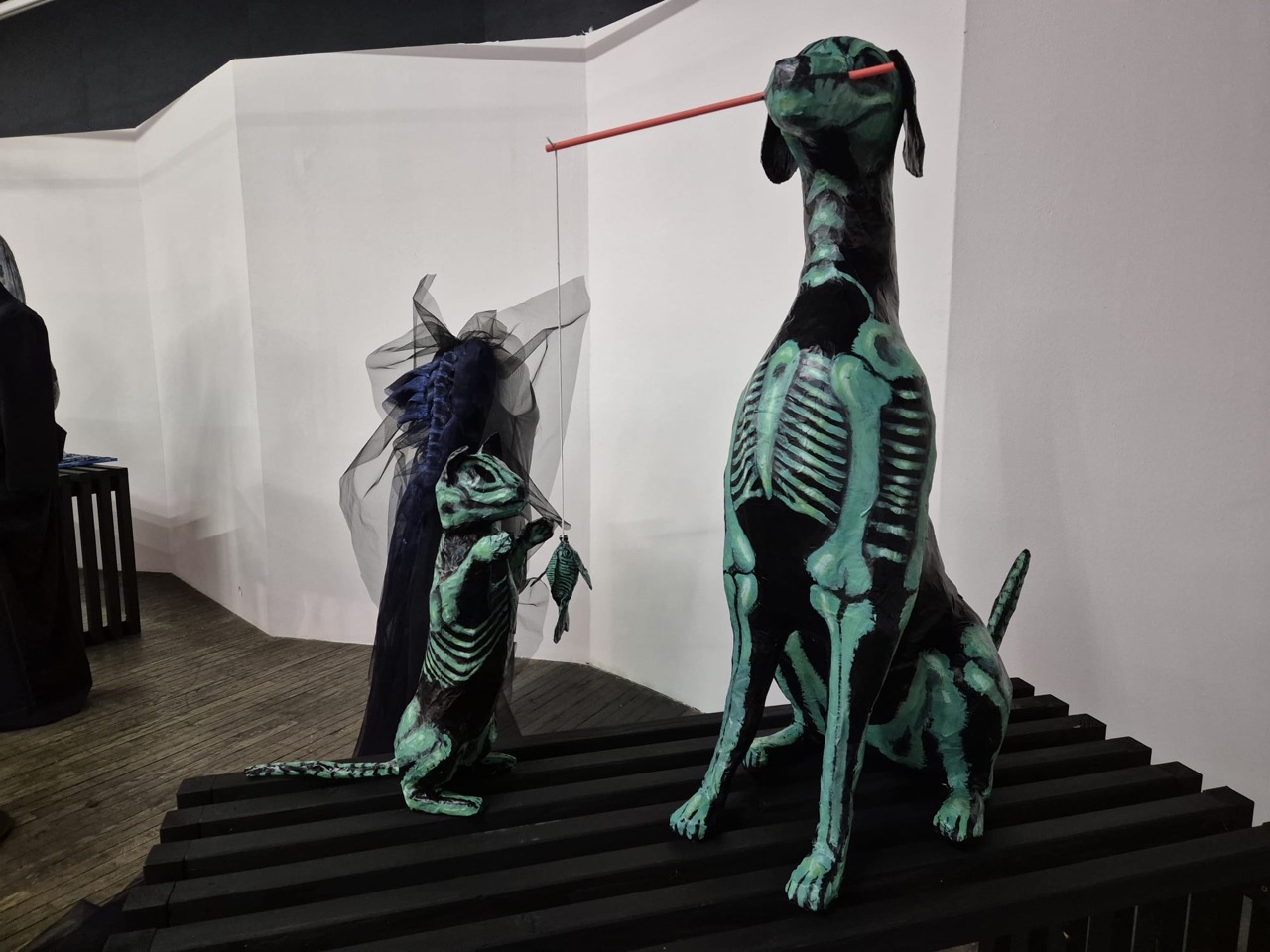

WED 6–9PM
THU–FRI 2–9PM
SAT–SUN 11AM–9PM
*garden 2AM
TUE 6–9PM
WED–FRI 2–9PM
SAT–SUN 11AM–9PM
*garden 12PM
Jadran film
Studio Orson Welles
Ul. Rudolfa Kolaka 12
10000 Zagreb
TUE 6–9PM
WED–FRI 2–9PM
SAT–SUN 11AM–9PM
*garden 12PM
WED 6–9PM
THU–FRI 2–9PM
SAT–SUN 11AM–9PM
*garden 2AM
The Faculty of Textile Technology at the University of Zagreb is the only higher education institution in Croatia that systematically educates experts in the fields of textile technology, engineering, fashion design, and costume design. Through undergraduate, graduate, and postgraduate university programs, students can choose among various specializations, including textile and clothing technology, fashion design, textile and clothing design, and costume design.
Interdisciplinarity, the integration of science, technology, and art, as well as the encouragement of creativity, innovation, and research-based approaches, represent the core values of the Faculty. In cooperation with industry, cultural institutions, and international partners, the Faculty provides students with contemporary, hands-on, and market-relevant education aligned with the development of the creative and cultural industries.
This collective art project brings together several students of the University of Zagreb, Faculty of Textile Technology, second year of the graduate program in Costume Design (course Applied Costume Design III), who explore the theme of the X-ray across different media – not only as a technical tool for penetrating beneath the surface, but also as a metaphor for revealing hidden layers of reality, identity, and perception.
Through images, installations, garments, and other forms of expression, the students question the boundary between the visible and the invisible, the physical and the abstract, the scientific and the artistic. Each work offers a unique perspective on the X-ray gaze, whether through the deconstruction of anatomical forms, the symbolism of transparency, or the exploration of light and shadow as a visual language.
The works were originally conceived and created for the Festival of Science 2025 – NETWORKS, with the main inspiration being the 180th anniversary of the birth of German physicist Wilhelm Conrad Röntgen.
University of Zagreb, Faculty of Textile Technology, graduate university program in Textile and Fashion Design, Costume Design track, 2nd year.
Aurora Martinić, We Are Not Strangers, Costume design mentors: Assoc. Prof. Dr. Art. Ivana Bakal, external associate Đurđica Kocijančić, M. Eng. Techn. Text., senior expert associate, The sculpture We Are Not Strangers was created from the need to remind myself—and perhaps others—of a truth we tend to neglect every day: that all of us, no matter how different we may appear, carry within us the same spark of life.
Eva Krijan, Lines of Being, Costume design mentors: Assoc. Prof. Dr. Art. Ivana Bakal, external associate Đurđica Kocijančić, M. Eng. Techn. Text., senior expert associate, Inspired by the concept of an X-ray image of the body, this work explores the boundary between the internal and the external—what we show and what remains hidden beneath the surface. Through fashion expression, it connects the symbolism of the body, anatomy, and identity.
Nina Letica, Truth Lies in the Spine, Costume design mentors: Assoc. Prof. Dr. Art. Ivana Bakal, external associate Đurđica Kocijančić, M. Eng. Techn. Text., senior expert associate, Dyeing mentor: Full Prof. Dr. Sc. Ana Sutlović, This work, inspired by X-ray imagery and animal anatomy, portrays the harmony between humans and nature. The human spine, as the pillar and bearer of the body and existence, is symbolically linked to the fish—it is the one that guides, the one that has the final word.
Ines Dušak, A Voiceless Body, Costume design mentors: Assoc. Prof. Dr. Art. Ivana Bakal, external associate Đurđica Kocijančić, M. Eng. Techn. Text., senior expert associate, The work explores the X-ray not just as a medical tool, but also as a metaphor for penetrating beneath the surface—into the hidden, the suppressed, or the forgotten. The choice of black and dark blue tulle is based on their airiness and layering, which visually evokes the act of X-raying—light passing through the body and revealing its inner structures.
Katarina Božičević, Martina Bubanj & Nika Pendić, Behind the Body’s Curtain, Costume design mentors: Assoc. Prof. Dr. Art. Ivana Bakal, external associate Đurđica Kocijančić, M. Eng. Techn. Text., senior expert associate, The main focus is on presenting the internal structures of the body—primarily the ribs and spine—through the form of a dress, thereby blurring the boundary between the body’s external appearance and its internal anatomy.
Nikolina Pavlović, Transparent Body, Costume design mentors: Assoc. Prof. Dr. Art. Ivana Bakal, external associate Đurđica Kocijančić, M. Eng. Techn. Text., senior expert associate, The concept of the work is based on the theme of corporeality and the scientific view of the human body, with an emphasis on the depiction of ribs. The central motif is made of black felt, a material with a firm, closed, almost impenetrable texture. Felt symbolizes the physical, the tangible, and the real—the construction of the body that science often reduces to function and form. The base is made of airy lace—a delicate, transparent fabric that allows the gaze to penetrate, but not completely.
Dorotea Kolatahi & Lucija Štajcer, Body Fragment, Costume design mentors: Assoc. Prof. Dr. Art. Ivana Bakal, external associate Đurđica Kocijančić, M.Eng. in Textile Technology, senior expert associate, The costume design draws upon the visual language of X-ray images—a medium that simultaneously reveals and depersonalizes the body. The dress, divided into a navy blue and beige half, reflects the contrast between internal reality (depicted through anatomical structure) and external perception (marked by diagnostic scripts, interpretations, and oversights).
Emma Klobučar, X-Pets, Costume design mentors: Assoc. Prof. Dr. Art. Ivana Bakal, external associate Đurđica Kocijančić, M.Eng. in Textile Technology, senior expert associate,This project explores the contrast between the external perception of pets and their internal structure. By creating 3D sculptures of pets painted to resemble X-ray images of their skeletons, the work reveals what is normally invisible to the naked eye.